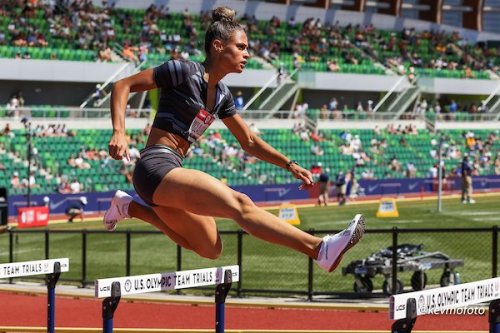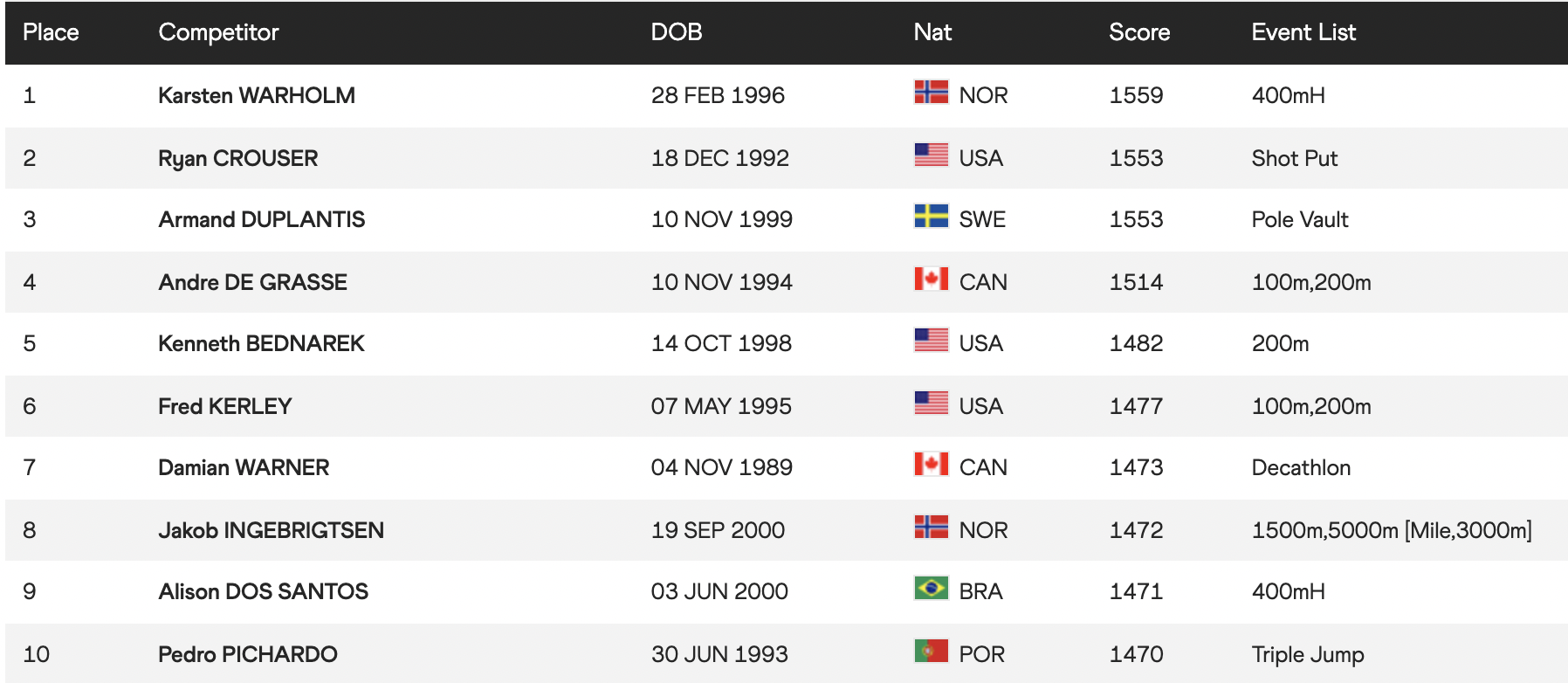This is Matt Wisner’s 4th column. He has some concerns with the new World Athletics rankings. Several people have addressed their concerns about how to fine tune WA rankings to make it better.
 Sydney McLauglin, does she need to race more to place higher in WA ranking system? photo by Kevin Morris / @kevmofoto
Sydney McLauglin, does she need to race more to place higher in WA ranking system? photo by Kevin Morris / @kevmofoto
RelatedPosts
A Case For an Update to the World Athletics Ranking System
By Matt Wisner
On September 28, World Athletics released the final iteration of their “overall rankings,” a list that ranks all track and field athletes and proposes standardization across events. The lists have glaring errors.
The idea is that the most impressive athletes this year should be at the top of the list. The scoring system clearly takes into account multiple performances, meaning that if an athlete has a bad day, that won’t wreck their chances at ranking well.

The scoring system also necessitates multiple impressive performances; it takes the average of an athlete’s five best scores. Sydney McLaughlin’s final ranking, for example, was vulnerable to this design flaw. She only competed three times in her main event, the 400-meter hurdles: once in Nashville, then the U.S. Olympic Trials, and then the Olympic Games.
McLaughlin was the Olympic champion in Tokyo. She set the World Record in the event. And she won every time she stepped on the line. She did not make the top-10 on the World Athletics list.
Femke Bol, the bronze medalist from Tokyo in the same event, did make the list. According to World Athletics, Femke Bol was the sixth most impressive woman in track and field this year. Bol was clearly rewarded for competing in the 400 hurdles in eight distinct meets, five of which were Diamond League meets, and one of which was the Olympics. To her credit, Bol has had arguably the most impressive progression in her event over the past year, and she won her 400 hurdles races every time she stepped on the track–except for when McLaughlin was also in the field.
The requirement of multiple strong performances also disadvantages distance runners, who may need a longer recovery period than a sprinter or jumper or thrower between competitions. Sifan Hassan is extraordinary, and still ended up second on the list despite this barrier, but Jakob Ingebrigtsen placing eighth on the men’s list may be a better example. Ingebrigtsen is the only male distance runner in the top-10, while five are sprinters or hurdlers.
The metric also favors Diamond League performances, which makes it eurocentric; it’s no secret that European athletes are accepted into Diamond League meets more than athletes from other continents. Ten of the 12 Diamond League meetings take place in Europe (there’s one in Eugene and one in Doha). The meet organizers are mostly European. Etc. Perhaps the problem isn’t that the overall rankings metric is eurocentric, but the Diamond League meet schedule is. Either way, there’s a problem.
The Diamond League and World Athletics are not the same thing. They’re separate organizations. World Athletics proposes to be an impartial international governing body for track and field, but it’s certainly tangled up with the Diamond League, explicitly or not. The world rank system which qualifies athletes without the Olympic standard to the Olympics, for example, prioritizes competition at Diamond League meets; they’re virtually the only “A” class meets available.
Maybe the World Athletics overall ranking is another attempt to encourage elite athletes to participate in Diamond League meets.
Another omission from the women’s overall ranking top-10 is Athing Mu, the Olympic gold medalist in the 800. Mu raced 36 times in 2021. She won 35. Mu was a collegiate athlete for most of the season, and NCAA meets are not rewarded well under the World Athletics scoring system. But outside of her three NCAA titles, Mu won the Pre Classic 800, the U.S. Olympic Trials 800, and the 800 in Tokyo. She is the eighth fastest woman in history in the event. She is not in the World Athletics top 10 this year.
The men’s list also has obvious errors. Alison Dos Santos, the bronze medalist in the 400 hurdles from Tokyo, made the top-10 (eighth) while Rai Benjamin did not. Benjamin earned the silver medal in the event and is the second fastest performer ever. This is the same situation as McLaughlin and Bol; Dos Santos was prolific on the Diamond League circuit while Benjamin mostly competed in the U.S.
David Melly deserves a shoutout for beating me to this analysis. He tweeted his critique a few days ago. We share the opinion that the scoring system is in need of an update.
A good scoring system balances fast times with impressive placement over strong competition. The current World Athletics scoring system sometimes does that, but there are clear blindspots.





















